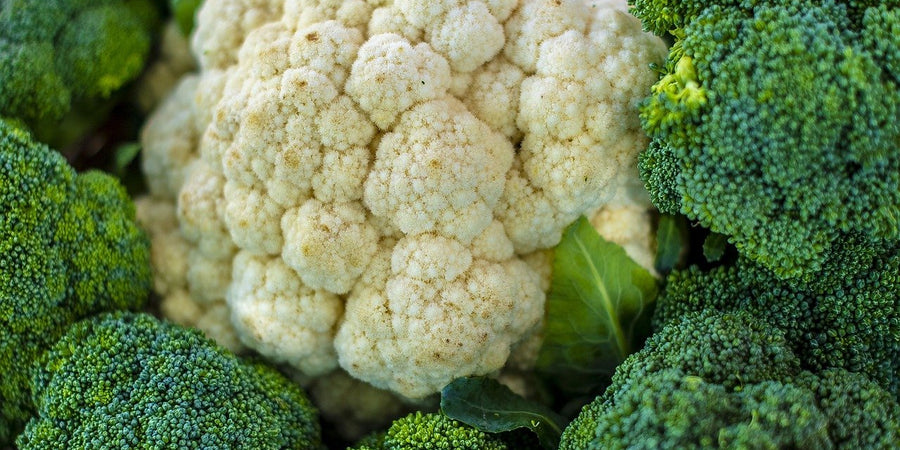How To Grow Cauliflower

Cauliflower is another brassica vegetable antiquity that finds its history origins in Syria, Turkey and Egypt. Later introduced to England and France via Spain this vegetable soon becoming very popular here on our shores.
This brassica is sometimes a challenge, whether growing summer, autumn or winter variety, the extra effort to raise homegrown white or the coloured cauliflowers such as Romanesco or Graffiti are well rewarded in flavour. If club root is a problem then try growing a resilient variety such as Clapton.
Here's Our Guide to Growing Cauliflower:
How, Where & When to Grow Cauliflower
Cauliflower can be grown all year round, although sowing times differ for summer and winter harvests. Provide well-drained fertile soil that is firm to support the heads. For autumn/winter harvest, sow seeds in spring starting seeds under protection in seed trays thinning out to individual 7cm pots before settling them into final planting position. Repeat sowing technique in early autumn planting out early winter for late spring/summer harvests. They are best eaten fresh so you should sow them successionally to prevent a glut you can’t use.
Distance
After hardening off seedlings planting distance between plants and rows for autumn/winter harvest to 75cm with spring/summer harvest planting distance of 60cm to be observed.
Regular Care
Keep plants well watered especially during dry summer spells and apply liquid fertiliser early spring and again midsummer for winter variety. Fold over leaves to protect the white curd variety from the sun, this is known as blanching. This is especially required during prolonged periods of high temperature. Not covering the curds will expose them to the sun and they will turn brown and die.
When Do You Harvest Cauliflower?
Harvest heads with a sharp knife when curds form a tight head and head is firm to touch. Cauliflowers can be stored in the fridge for 1-2 weeks wrapped tightly in clingfilm.
Are Homegrown Cauliflowers Nutritious?
Cauliflower should be everyone’s go-to vegetable, its low in calories, zero fat and a nutritional powerhouse. Just one serving of cauliflower contains 100% daily value for vitamin C, which can help support immunity, as well as DNA repair in the body. Vitamin C can also help protect your body from infection and even can stimulate the formation of antibodies to fight off disease. It’s abundant in vitamin k – good for bones and blood clotting. Cauliflower is a carbohydrate, like all vegetables. However, it's the non-starchy, complex kind with lots of fibre and low amounts of naturally occurring sugar. One cup contains about a sixth of the carbs as the same amount of cooked pasta or rice, making it a great option for diabetics or anyone watching their blood sugar.

Cooking
Who doesn’t love Cauliflower cheese…try it with a twist, roasted in the oven with parmesan and some thyme. Create a Cauliflower rice pilaf for your next Indian meal, or why not Cauliflower Bolognaise, yes really!
Growing Guides
If you're thinking of sowing other vegetable and herb seeds, discover more of our growing guides.
Buy Cauliflower seeds today:




